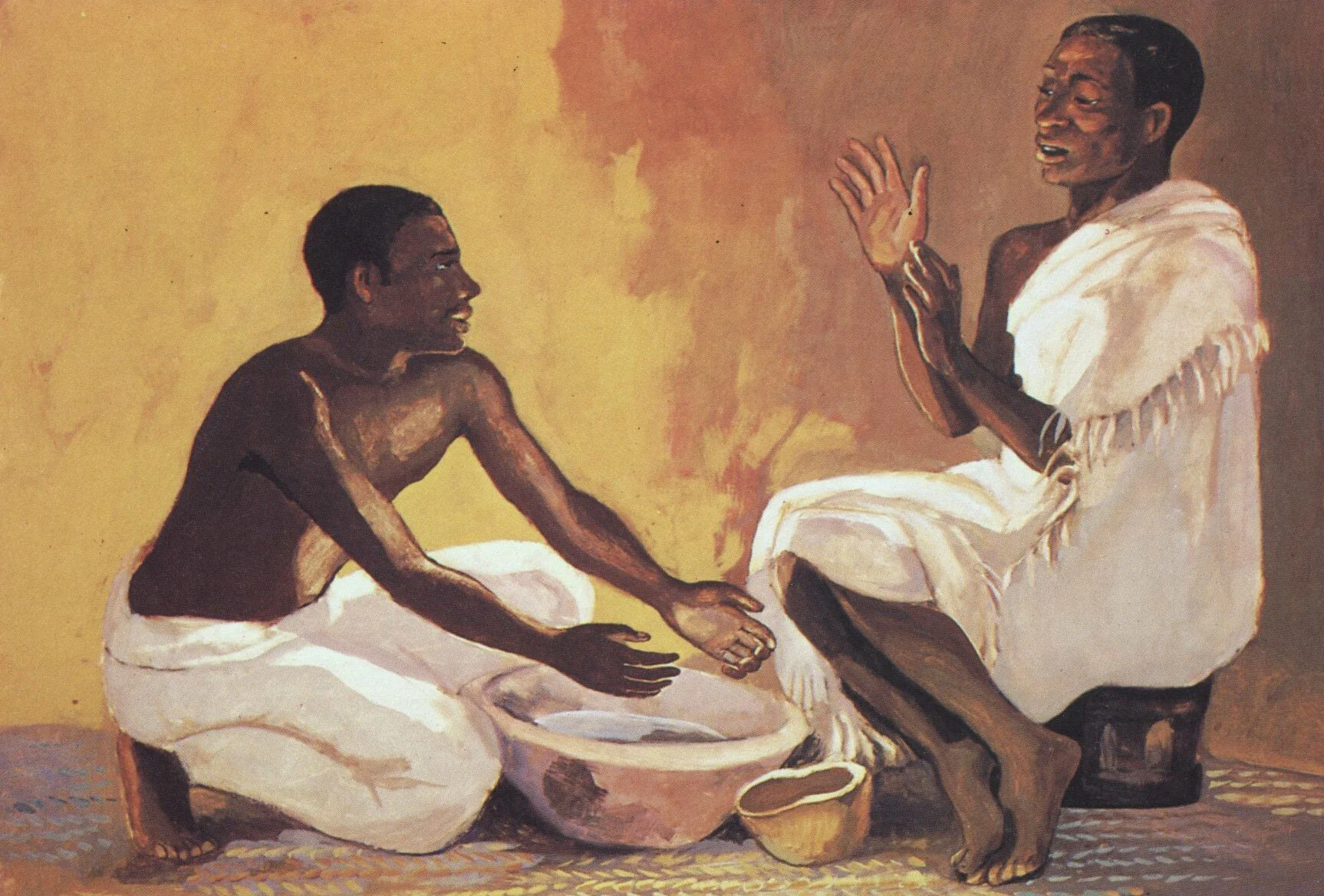While this is only a short list of ideas, my hope is that these suggestions offer a point of reference for what intentional intergenerationality could look like in your church as you think through your own context. Regardless of how your church seeks to include children more intentionally within its worship practices, the most important point is to start somewhere so that you can embody being a church where all God’s people gather.
The Power of God’s Story and the Power of Community
It became clear our theme needed to embody the different ways that Jesus would challenge people through his use of parables — Woven Together: The Power of Biblical Narratives.
Wrestling with Hard Questions
If we are to help our children find their place in God’s unfolding story, one of our priorities must be ensuring that our children know that God is big enough to handle all of the questions.
An Environment that Nurtures Faith
As churches seek to support the development of a lifelong embedded faith, it will undoubtedly be a journey that requires perseverance and a willingness to challenge practices.
Looking Toward Summit
I am excited by the opportunities that we will have to come together as a larger community and reflect on our theme of Holy Discomfort.
Summit: Living Word
ACU is in its 116th year of Summit, and this spring’s edition focuses on the living word of God and the impact it has on our churches, our ministries, and our lives.
The Story of Summit
This fall, we will seek to discover what it means to abide with God not only amidst the challenges of life but also through the joys and hopefulness that emanate out of that relationship.
Foot Check. Nose Check. Smile Check.
If we acknowledge the physical and/or emotional constraints that limit our capacity, then we also become intentional about focusing our ministry around these essentials and doing so in whatever format works.
A Journey of Inclusion (Part 2)
As we endeavor to correct unconscious bias and ultimately lean into what it means to be more Christlike, I invite you both personally and in your faith communities to consider the following three statements.
A Journey of Inclusion (Part 1)
Inclusion means that the congregation embraces the inherent value in all voices and seeks to make them an active part of the whole.
Demonstrated. Present. Essential.
We witness a demonstration of love that speaks to the humility and self-sacrificing nature of who Jesus is at his very core .
Act Justly, Love Mercy, Walk Humbly
To operate under the assumption that we all encounter injustice in the same way diminishes the strength that comes when we purposefully stand up for each other.
Please Hear My Voice
There exists a group of people who feel like they are not being heard. Not being listened to. Not being welcomed into the kingdom of God in the way God intended.
Doing the Right Thing
In the story of Zacchaeus, we see two clear examples of what it looks like to push back against accepted culture and instead do what is right.
Be Still and Know
It is so easy to get caught up in evaluating the quantifiable moments of ministry. But God isn’t about the quantifiable moments.
A Difficult Conversation
As I watch my daughters grow in their relationship with Christ and start to discover their gifts as empowered by the Father, I am worried.
Jesus Wept
In these two words exists a clear example from Jesus of what it looks like to truly and intentionally experience life with another person.
A Beautiful Mosaic
Jesus prays for us to achieve unity in our diversity so that the world will know the unconditional love of God and believe.



















